Just a couple of things found while poking around at night, nothing earth-shaking.
The orphaned white-tailed deer (Odocoileus virginianus) fawns were mentioned in the previous post, and we found that they are not only regular visitors, they sleep over from time to time. These were taken from the vicinity of the door to Walkabout Studios.
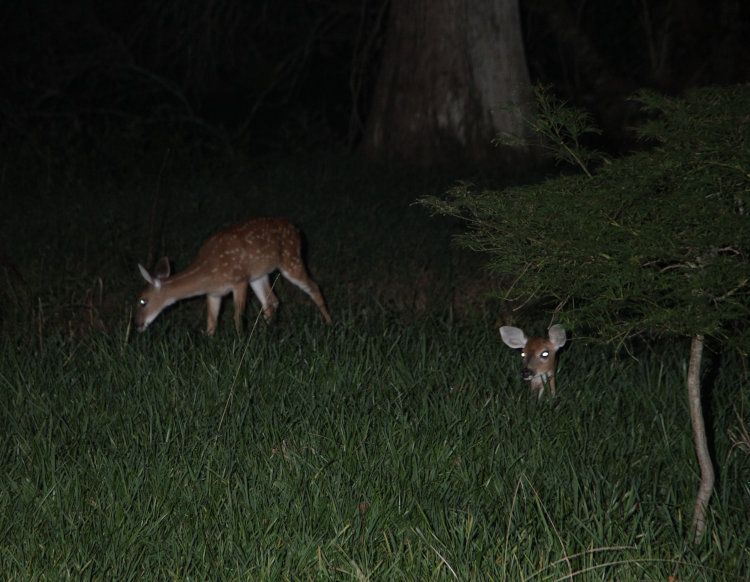
Notably, this is not with the long lens, but the 18-135 at 135mm – they were perhaps a little over ten meters away, and likely confused by the headlamp since they normally don’t allow even a slightly close approach. The grazing one even required me to make several distinct noises just to get it to look up.
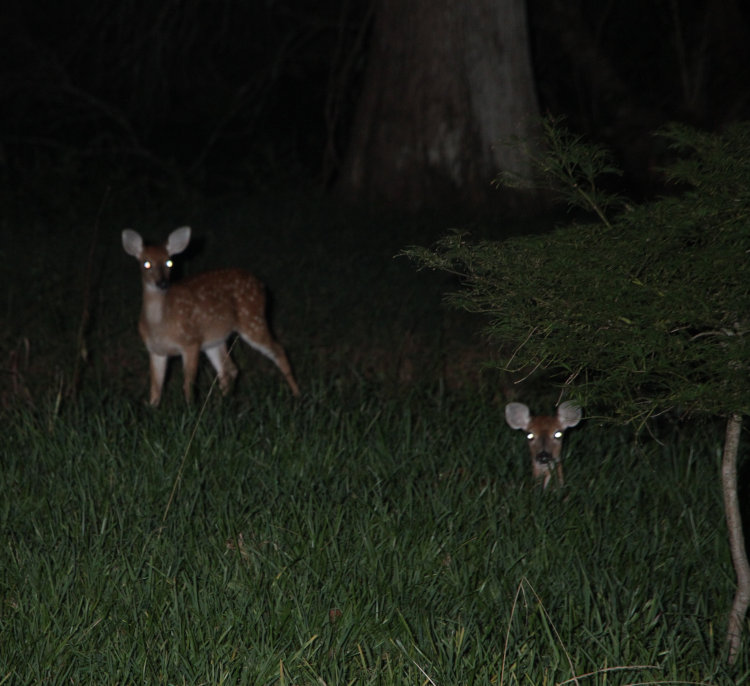
Focus is only by the reflections of their eyes in the viewfinder, so it’s not precise, plus I was shooting wide open at f5.6 so depth-of-field isn’t there either. Still, they remained without fleeing, even when they prevented me from checking the denizens of the various Japanese maple trees that evening, including the one at the edge of the frames here.
I could poke around out front, though, and made another discovery.
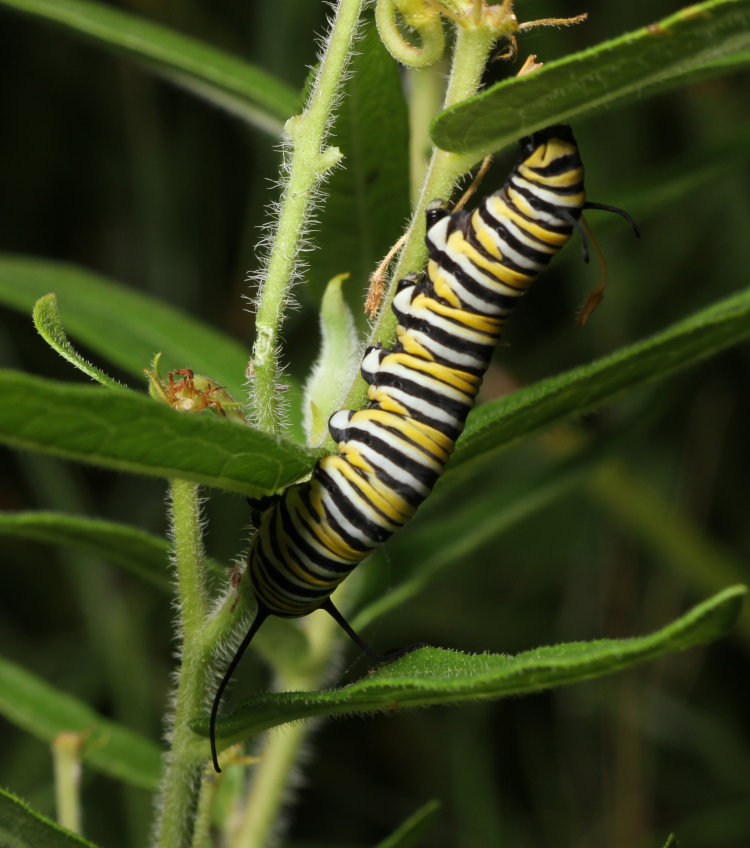
I was wondering who cropped the occasional flower heads from the orange milkweed (Asclepias tuberosa,) stupidly never thinking of it being a caterpillar – I kept believing the deer were doing it, and have been routinely treating this cluster of plants with deer repellent. But this is exactly what the flowers are here for, since this is the larva of a monarch (Danaus plexippus,) the species we were hoping to attract.
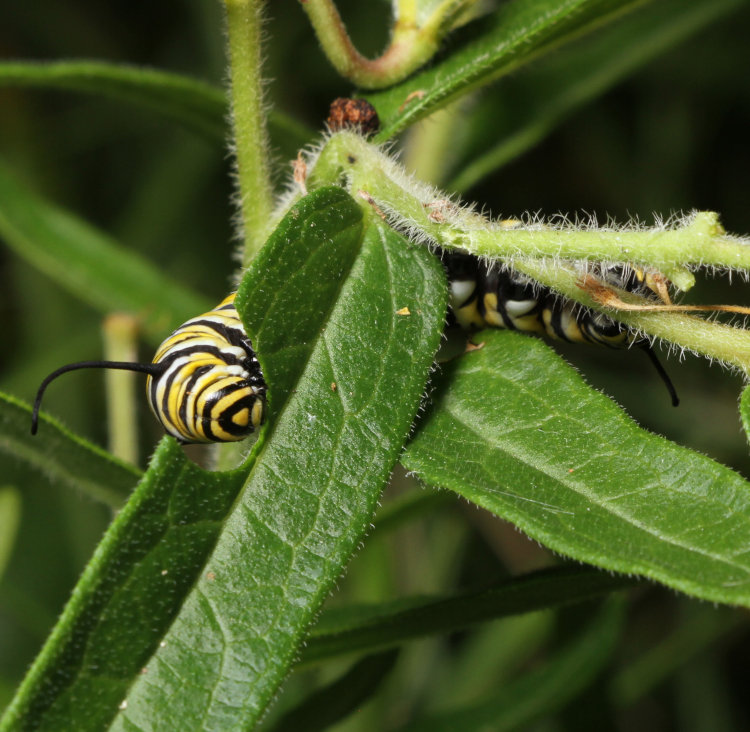
We purchased these flowers a couple of months ago and they seem to be doing fine. Hopefully they’ll go to seed, but either way, we may be adding a lot more – doing our part to help combat the monarch decline. With luck, this larva will make a chrysalis on the plant or nearby, so I can monitor it.
By the way, those bright contrasting colors (for both the larvae and the adults) are indeed aposematic, “keepaway” warnings to predators, since the species is toxic to eat – and they get their toxicity directly from these plants. Well, not this patch specifically, but the milkweed family in general.
I looked, by the way, and this was the only specimen that I found, which is curious, but might only mean that I’m terrible at spotting them.
And one that wasn’t hard to spot, despite being minuscule.
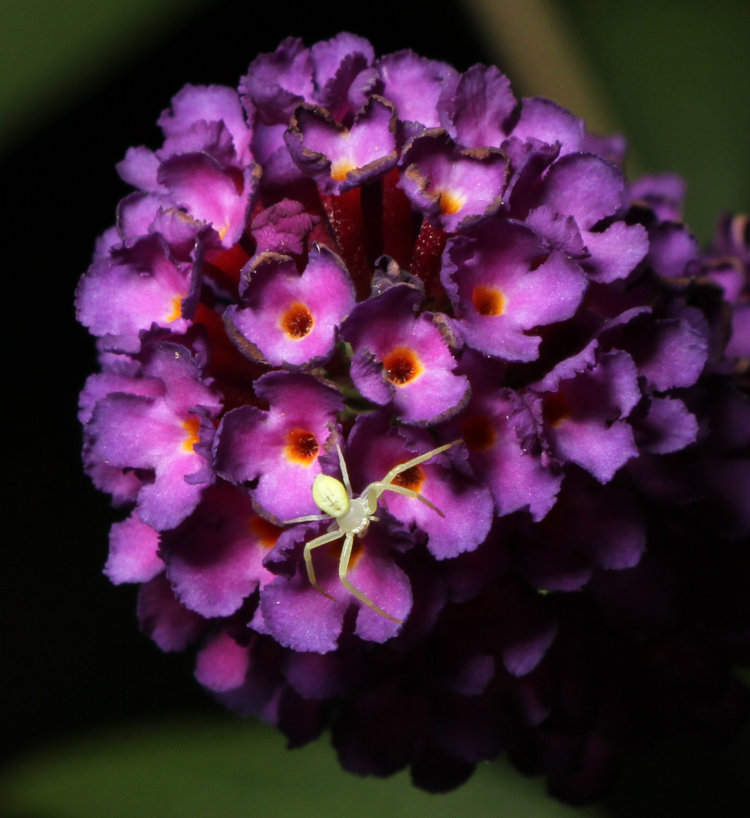
The black knight butterfly bush (Buddleja davidii) that came with us from the old place absolutely exploded this season, as did the almond tree – both have doubled their mass since transplanting, approving heartily of the conditions here. We made a small mistake with this one, in that we didn’t know there was a thriving calla lily plant right next to it until it bloomed this spring, and they’ve been fighting for the same space. But the butterfly bush is doing its job in attracting not just the pollinators, but the predators of pollinators, including this tiny crab spider (Family Thomisidae.) I’m not sure it could have a more contrasting coloration against these blooms, but whatever – it usually sits nestled down between the blossoms anyway. I’d have to look very carefully, but the only pollinators that I’ve seen at these flowers are far too massive to serve as food for this guy, though presumably it knows what its doing, and this is far from the first time that I’ve seen tiny crab spiders on the plants.
That’s all for now, but I have a ton of video clips to edit for this week’s Estate Find, and I should get another post or three in before then.



















































